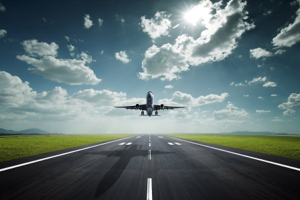Another brilliant piece from a GUNNAS WRITING MASTERCLASS WRITER.
2014 was a terrible year for flying. In March, MH370 winged its way towards Antarctica and disappeared into urban myth, and three months later MH17 was shot out of the sky by amateur insurgents in a war that should have remained 40,000 feet below. The name of a script-happy Indian doctor in Collingwood, who’d prescribe valium with a nudge and a wink, did the rounds amongst my friends.
My relationship with planes took a hit that year too. My subconscious chewed over the facts and fiction of flight disasters as I read everything I could find on the topic. I downloaded the flight-tracker app FlightAware and watched my family’s flightpaths on my iPhone just so I could relax once the notification announced that they had ‘Arrived!’ I remained on the ground but my head was always in the clouds. Living in Sydney, home of Australia’s busiest airport, did not help what gradually spiraled into a preoccupation in my daily life.
My first Sydney house was on the North Shore and from my suburb, the aircraft looked like mobiles circling in the sky, gliding in over the sparkling harbor and disappearing beneath the curated treeline. The 40,000 horsepower engine noise obscured by the sounds of the nearer whipper-snippers cranking up from any moment after 7.01am. From this distance, their path across the sky looked as predestined as the sun and the moon.
But then we moved closer to the flightpath and the dreams started. During the day, the noise didn’t bother me. Not that much. It wasn’t like houses directly under the flightpath, where the windows would rattle and conversation paused for thirty-five seconds every seven and a half minutes. On my daily run around Iron Cove Bay, the descending machines would catch in my peripheral vision, like magnificent pelicans coming down to land.
But at night, night after night, I dreamt of destruction and carnage, of chaos and helplessness. From my subconscious vantage point (always outside, watching on) I watched in dread as fate took its course. My toes would curl and I would scream silently in my sleep the plane ploughed into the earth, sending out shockwaves through the ground, exploding in searing white light or triggering tsunamis that compounded its terrifying conclusion.
Recurrent dreams haven’t been a part of my dreamstate DNA, so I did what any self-respecting Gen-Yer would do when faced with new stimuli: googled it. Dreammoods.com touted itself as the definitive dream encyclopedia. We scrolled down to Plane Crash. “To dream that a plane crashes signifies that you have set overly high and unrealistic goals for yourself. You are in danger of having those goals come crashing down. Alternatively, the crashing airplane represents your lack of confidence, self-defeating attitude and self-doubt”
For someone who had just moved to a new city, started a new career and had finally stopped talking about writing and had started doing it, this was the worst verdict I could have received. ‘Just give up now’ would have done the trick in fewer words. My partner, usually calmly upbeat, was at a loss to put a positive spin on it, because frankly there was no room for an interpretation of anything other than a signifier of utter failure. So we wrote it off as the work of a bitter hack or a wannabe astrologer, and resolved to buy an actual hard-copy dream guide, because surely the writing would be better.
But before too long, I got my first real break in the city with a decent job, we graduated from house-sitting to renting, and the dreams stopped. Perhaps the recurrent dreams weren’t about failing, they were about getting my hands on the yoke of my new life and exercising some control over my path.
Now the only time I think of crashing planes is the moment I step onto them, when I take a deep breath and submit myself to the fate of the universe. And order a glass of wine before the turbulence sets in.












